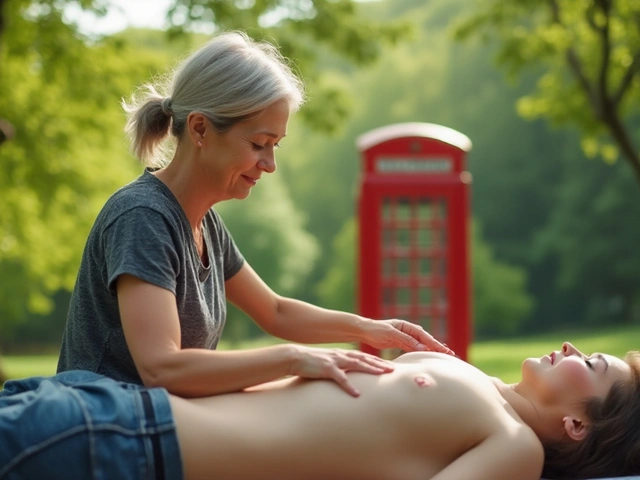Wellness Guide: Simple Daily Habits That Actually Work
You can feel better in five minutes. No pills, no expensive gear—just a few reliable habits you can use every day. This guide gives short, practical steps for calmer thinking, less pain, and more energy, whether you care for yourself or a dog at home.
Quick daily habits
Breathe first. Try box breathing: inhale 4 seconds, hold 4, exhale 4, hold 4. Do it three rounds before a stressful call or when anxiety spikes. For sleep, do a 2-minute progressive relaxation—tense a muscle group for five seconds, then release, moving from toes to head.
Move in short bursts. Three 10-minute sessions of walking, stretching, or a quick bodyweight set beats one long workout if your schedule is tight. Runners and athletes add foam-rolling or a targeted sports massage once a week to ease tightness and help recovery.
Eat for mood and heart. Add omega-3s (salmon, walnuts, flax) and a protein-rich breakfast with whole grains and fruit to steady energy. Swap salty snacks for nuts, berries, or Greek yogurt to protect cholesterol and curb cravings.
Tools and therapies that help
Try small tools: lavender or bergamot essential oil eases sleep; a simple biofeedback app or heart-rate variability tool shows how breathing changes your body. Use these tools to practice—seeing progress helps you stick with it.
Hands-on work matters. Neuromuscular massage, myofascial release, and Ayurvedic or Maya abdominal techniques target chronic tension. Sessions can be intense; follow aftercare: hydrate, rest, and do gentle movement afterward. If pain won’t ease, check with a therapist.
Creative and gentle approaches help mental health. Ten minutes of drawing, singing, or moving to music lowers stress without needing skill. Meditation beginners: set a timer for 3–5 minutes, focus on breath, and label distractions—"thinking"—then return to breathing. Small daily practice builds focus.
Energy-based options like Reiki or polarity therapy aren’t magic, but many people report less tension and better sleep after a few sessions. If curious, try three sessions before deciding whether it helps you.
Include your dog. Gentle stroking or a short massage session calms many dogs and strengthens your bond. Use slow, even pressure along the neck and back, and watch for relaxed breathing and soft eyes—signs your dog is enjoying it.
Make tiny goals. Pick one habit: two extra glasses of water, a 5-minute morning breath practice, or swapping one snack. Track it for two weeks and add another habit once it feels easy. Small, steady changes add up faster than big one-time efforts.
When to get professional help: if pain, persistent anxiety, or sleep problems continue despite consistent self-care, see a doctor, therapist, or physiotherapist. Your daily habits make professional care work better, not replace it.
Try one change this week, notice the result, and repeat. Wellness is a stack of small wins—do one thing well, then build from there.

The Wonders of Gua Sha: A Comprehensive Guide
Join me on a fascinating journey into the world of Gua Sha, a traditional healing technique steeped in centuries-old wisdom. I'll take you through a comprehensive guide, encompassing its incredible benefits and integral role in holistic wellness. Learn about this ancient secret that's been passed down in Traditional Chinese Medicine. Come along, as we explore the wonders, techniques, and effects of Gua Sha on our health and wellness. Ready to illuminate your healing journey? Let's dive right in!

Why Gut Health is Crucial for Weight Management
Nov, 28 2025



